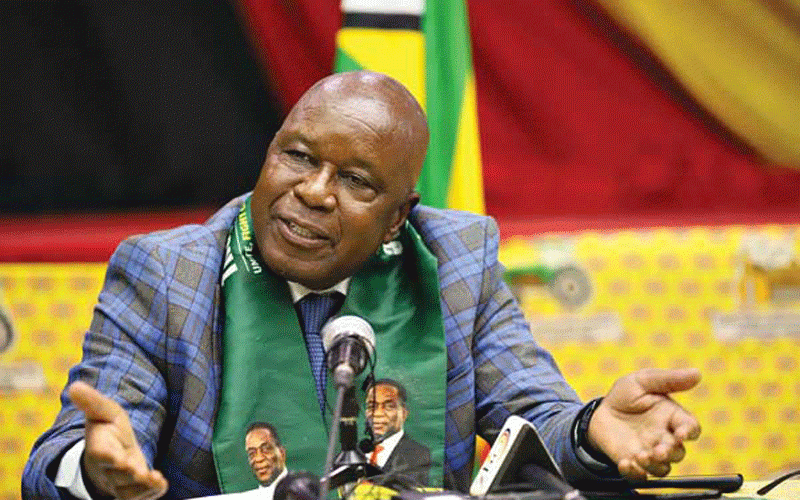
BY NYASHA CHINGONO
The government designated 11 rural areas across three provinces Covid-19 hotspots after a sharp rise in cases. The measures come as the country battles to contain a third wave of coronavirus. Mashonaland West, Masvingo and Bulawayo provinces have been singled out as hotspots following a surge in infections.
The government had already declared hotspots in three other regions, the first in May and two others early this month.
A nationwide lockdown was announced in mid-June, the second this year.
But restrictions in the Mashonaland West districts are tougher than elsewhere in the country, with many businesses having to close at 3pm instead of 6pm.
Since Zimbabwe recorded its first case in March last year, semi-urban and rural areas have been considered safe zones, with most cases concentrated in the cities and towns.
But in May a rise in rural cases sparked concerns that local health services would be unable to cope.
Last week, recorded cases increased 127% from the previous week, from 544 to 1 239.
- Chamisa under fire over US$120K donation
- Mavhunga puts DeMbare into Chibuku quarterfinals
- Pension funds bet on Cabora Bassa oilfields
- Councils defy govt fire tender directive
Keep Reading
The country has recorded a total of 45 217 cases and 1 721 deaths, as of June 25.
Despite a good start to its vaccination programme, Zimbabwe now has a severe shortage of vaccines.
Mashonaland West, home to about 1,5 million people, has been the hardest hit by new infections.
The rise is believed to have been caused by little or no social distancing as tobacco and grain farmers travel to and from auction houses to sell produce.
“We were never a priority in the first place, which means they [the government] do not care about us.
We are like lambs to the slaughter, coming here is now very scary. I hear cases are rising daily, we are not safe,” said tobacco farmer Cleopa Mushaninga (50) from Karoi in Mashonaland West.
“My neighbour was admitted [to hospital] last week, and he is nursing a high fever,” Mashininga added.
We do not know, maybe it is this Covid. No one is safe any more.”
Bernard Bwerinofa (36), panicked after his wife tested positive for Covid-19.
Luckily, Bwerinofa and his two small children tested negative and his wife is recovering at home.
“I used to think that Covid-19 was foreign, but it has visited us, and we have to be vigilant,” Bwerinofa said.
“I cannot express the fear of losing my wife when she became feverish. The nearby hospital was already full, so we had to take her home.
“I am glad she is on the mend, but it was a scary moment.’
Most rural Zimbabweans rely on the radio for critical Covid news and advice.
Dissemination of information has largely focused on urban areas, through public address systems, flyers and posters, as has the rollout of vaccines.
Nearly 1,15m doses have been administered of China’s Sinopharm and Sinovac vaccines and the Indian vaccine Covaxin.
More than 737 483 people have had one vaccination and 484 434 have had two.
Maud Dhaka (45), from Chikuti in Marshonaland West, is worried that her small business selling groceries and clothing will suffer during the lockdown.
“Covid-19 or no Covid-19, I have to survive, and it is not looking good,” Dhaka said.
“Our customers are living in fear, and it affects my business, which was already struggling.
“Opening from 8am to 3pm is not sustainable for small businesses, we need long hours to operate.”
According to the World Bank, half of Zimbabweans fell into extreme poverty during the Covid-19 pandemic.
The pandemic added 1,3 million Zimbabweans to the numbers of extreme poor as jobs and income were lost in urban areas.
World Bank, says the “extreme poor” are defined as people living under the food poverty line of US$29,80 (£21) for each person a month.
Those living below this threshold doubled from 3 million in 2011 to 6,6 million in 2019, with higher numbers than ever recorded in rural areas.
Child poverty has risen exponentially around the country and humanitarian agencies are recording high levels of malnutrition and stunted growth.
The government said it will be monitoring infection rates across the country and reviewing measures to contain the third wave.
It has promised to increase awareness campaigns across the country, focusing on the most affected areas.
It said television and radio stations have increased Covid-19 information programming.
—The Guardian











